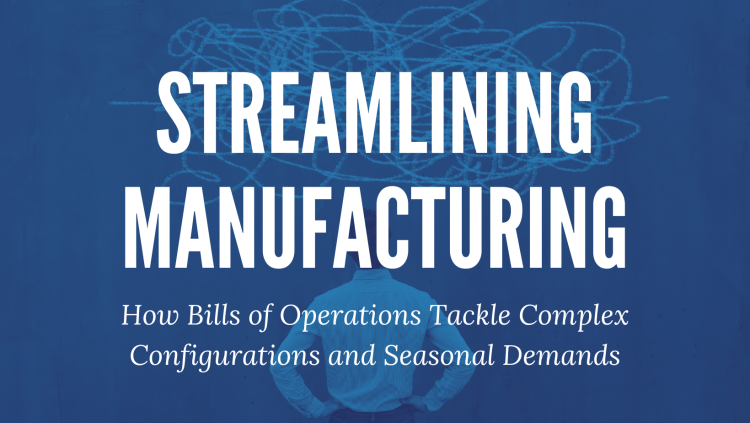In today’s dynamic market landscape, businesses face a multitude of challenges, including managing complex product configurations and navigating seasonal demand fluctuations. These complexities can lead to inefficiencies, increased costs, and missed opportunities. However, with the implementation of Bills of Operations (BoO), companies can streamline their operations and adapt more effectively to these challenges. In this blog post, we will explore how Bills of Operations can be a game-changer for businesses seeking to optimize their manufacturing processes.
Understanding Bills of Operations:
Bills of Operations, also known as BoO, are a hierarchical structure that breaks down the manufacturing process into detailed operational steps. Each step outlines the necessary tasks, materials, and resources required to produce a specific product or component. This detailed approach empowers manufacturers to gain granular visibility into their production processes, making it easier to manage complex product configurations and seasonal demand variations.
Addressing Complex Product Configurations
In many industries, products can come in a multitude of configurations, each with unique features, components, or specifications. Without proper management, dealing with these configurations can lead to errors, production delays, and a waste of resources. BoO provides manufacturers with a systematic way to handle complex product variations. By breaking down each configuration into its respective operational steps, production teams can ensure that the right processes and materials are used for each product variant, minimizing errors and improving production efficiency.
Moreover, the flexibility of Bills of Operations allows manufacturers to add, modify, or retire specific operational steps based on the product configuration. This adaptability not only streamlines production but also opens up opportunities for rapid prototyping and customization to meet ever-changing market demands.
Navigating Seasonal Demand Variations
Seasonal fluctuations in demand can pose significant challenges for manufacturers. During peak seasons, there is a need to ramp up production to meet increased demand, while off-peak periods may require cost-saving measures to avoid excess inventory and associated carrying costs. Bills of Operations play a vital role in managing these fluctuations.
By breaking down the manufacturing process into detailed operational steps, BoO enables manufacturers to adjust production volumes based on demand forecasts. Production teams can easily scale up or down specific operational steps as needed, ensuring the optimal utilization of resources without compromising product quality. This flexibility helps businesses to avoid overproduction during off-peak seasons and prevent stockouts during high-demand periods, ultimately improving customer satisfaction and reducing operational waste.
Conclusion
The challenges posed by complex product configurations and seasonal demand variations can be daunting for manufacturers, but with the implementation of Bills of Operations, these hurdles become more manageable. BoO provides a structured and flexible approach to production, allowing businesses to efficiently handle diverse product configurations and adapt their processes to changing demand patterns. Embracing Bills of Operations can lead to streamlined operations, reduced costs, and improved customer satisfaction—essential elements for long-term success in today’s competitive market.
Incorporating Bills of Operations into your manufacturing process could be a pivotal step towards achieving operational excellence and staying ahead of the competition. Embrace the power of BoO and unlock your company’s full potential in a rapidly changing business landscape.
If you’re looking for digital tools to help your company create and manage your Bills of Operations, contact us at Josh@OptegritySolutions.com. Our solutions are helping multiple companies solve manufacturing issues, reduce waste, and pursue operational excellence.

Leave a Reply